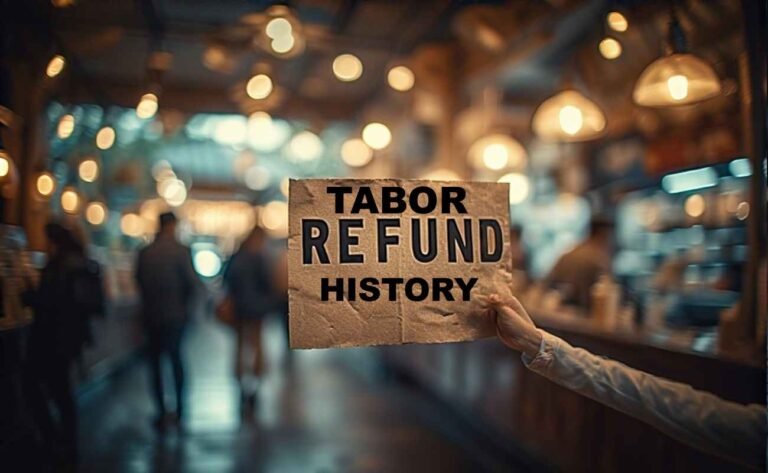Minnesota Budget Surplus Rebates: Your Guide to Receiving Up to $1,300
In 2023, Minnesota capitalized on a historic $17.6 billion budget surplus to distribute one-time tax rebates of up to $1,300 to eligible residents, aimed at easing financial burdens for middle- and lower-income households. Signed into law by Governor Tim Walz in May 2023, the rebates provided $260 for individuals with an adjusted gross income (AGI) of $75,000 or less, $520 for married couples filing jointly with an AGI of $150,000 or less, and an additional $260 per dependent (up to three), totaling a maximum of $1,300 for families. These payments, part of a $3 billion tax relief package, were disbursed via direct deposit or paper checks starting in August 2023, with reissued checks for uncashed rebates sent out in early 2024. However, the IRS ruled these rebates taxable on federal returns, potentially adding a tax liability of $26 to $286 depending on income.
This comprehensive guide outlines everything you need to know about the Minnesota budget surplus rebates, including eligibility criteria, payment processes, tax implications, and steps to take if you haven’t received your payment. With detailed lists and tables, we’ll break down the essentials to ensure you’re fully informed about this financial opportunity. Whether you’re a Minnesota resident seeking clarity or planning your 2023 tax return, this article is your go-to resource for navigating the rebate program.
Understanding the Minnesota Budget Surplus Rebates
Minnesota’s budget surplus rebates, often referred to as “Walz checks,” stemmed from a massive $17.6 billion surplus projected in December 2022. The state legislature, under Democratic control, allocated approximately $1 billion to return to taxpayers, prioritizing middle- and lower-income families. While Governor Walz initially proposed larger rebates ($1,000 for individuals and $2,000 for couples), the final legislation scaled these down to focus on targeted relief and other state investments, such as infrastructure and child tax credits. Let’s dive into the specifics of this program through structured lists and tables for clarity.
Eligibility Criteria for Minnesota Tax Rebates
To qualify for the Minnesota tax surplus rebates, residents needed to meet specific criteria based on their 2021 tax filings. Here’s a detailed breakdown:
- Residency Requirements:
- Income Thresholds:
- Individuals with an AGI of $75,000 or less in 2021.
- Married couples filing jointly with an AGI of $150,000 or less.
- Those exceeding these income caps were ineligible, as the program targeted middle- and lower-income households.
- Dependent Eligibility:
- Eligible families received an additional $260 per dependent, up to three dependents.
- For example, a family with three children could receive $520 (for joint filers) + $780 (for three dependents) = $1,300.
- Exclusions:
Table 1: Minnesota Rebate Eligibility and Amounts
| Criteria | Details |
|---|---|
| Individual AGI Limit | $75,000 or less (2021 tax year) |
| Joint Filer AGI Limit | $150,000 or less (2021 tax year) |
| Individual Rebate | $260 |
| Joint Filer Rebate | $520 |
| Dependent Rebate | $260 per dependent, up to three ($780 max) |
| Maximum Family Rebate | $1,300 (joint filers with three dependents) |
| Residency | Full-year or part-year Minnesota resident in 2021 |
| Exclusions | Dependents, non-residents, deceased before Jan 1, 2023 (except joint filers) |
Payment Distribution Process
The Minnesota Department of Revenue managed the distribution of nearly 2.1 million rebate payments, totaling close to $1 billion. Here’s how the process worked:
- Payment Methods:
- Direct Deposit: Prioritized for those with bank details on file from 2021 tax returns or updated by July 28, 2023. Payments appeared as “State of Minnesota 2021 Tax Rebate Program” on bank statements.
- Paper Checks: Mailed to addresses from 2021 tax returns or updated by the deadline. Checks were sent in plain white envelopes with standard banking safeguards.
- Timeline:
- Direct deposits began in August 2023, continuing through the end of the month.
- Paper checks were mailed starting in late August, with all initial payments completed by September 2023.
- Approximately 150,000 uncashed checks were reissued in November/December 2023, followed by 128,000 more in February/March 2024. These checks expire two years from the issue date.
- Issues and Resolutions:
Table 2: Payment Distribution Timeline
| Phase | Details |
|---|---|
| Direct Deposits | August 2023, prioritized for updated bank details |
| Paper Checks | Late August–September 2023, mailed to 2021 or updated addresses |
| Reissued Checks | November/December 2023 (150,000 checks); February/March 2024 (128,000 checks) |
| Expiration | Two years from issue date |
| Bank Statement Label | “State of Minnesota 2021 Tax Rebate Program” |
Tax Implications of Minnesota Rebates
One critical aspect of the Minnesota budget surplus payments is their taxability. While Minnesota does not tax these rebates, the IRS ruled them taxable on federal returns, which caught many residents off guard. Here’s what you need to know:
- Federal Taxability:
- The IRS classified the rebates as taxable income, requiring recipients to report them on their 2023 federal tax returns.
- The Minnesota Department of Revenue issued Form 1099-MISC to all recipients to facilitate federal tax filing.
- Estimated federal tax liability ranges from $26 to $286, depending on household income and rebate amount.
- Minnesota Tax Exemption:
- Tax Filing Tips:
- Keep your Form 1099-MISC for accurate reporting.
- Consult a tax professional if unsure how to handle the rebate on your federal return, especially if you’re in a higher tax bracket.
List: Steps to Handle Rebate Taxability
- Receive Form 1099-MISC: Check your mail or online tax portal for the form sent by the Minnesota Department of Revenue.
- Report on Federal Return: Include the rebate amount as miscellaneous income on your 2023 federal tax return.
- Subtract on Minnesota Return: Use Schedule M1M (line 33) and Form M1PR (line 11) to deduct the rebate from Minnesota taxable income.
- Verify Tax Bracket Impact: Calculate potential federal tax liability ($26–$286) based on your income.
- Seek Professional Help: If complex, consult a tax advisor to ensure compliance.
For more insights on handling tax-related payments, check out our guide on New York STAR Checks: Up to $1,500 Guide for additional state-specific tax relief programs.
What to Do If You Haven’t Received Your Rebate
If you believe you’re eligible but haven’t received your Minnesota tax rebate, don’t panic. The Department of Revenue has outlined steps to resolve non-delivery issues. Here’s a detailed guide:
- Check Eligibility:
- Verify you meet the residency, income, and dependency criteria listed above.
- Ensure you filed a 2021 Minnesota income tax or property tax refund return.
- Contact the Department:
- If no payment is received by May 1, 2024, call the Minnesota Department of Revenue at 651-556-3000 or email mntaxrebate@submittable.com.
- Provide your 2021 tax return details for verification.
- Common Issues:
- Outdated Address: Payments were sent to the address on your 2021 return unless updated by July 28, 2023.
- Banking Errors: Failed direct deposits (e.g., closed accounts) triggered paper check mailings.
- Lost Checks: Reissued checks were sent in early 2024; check your mail for plain white envelopes.
- Additional Resources:
- Visit the Minnesota Department of Revenue for eligibility details and FAQs.
- Review the IRS Taxable Rebate Guidelines for federal tax implications.
Table 3: Troubleshooting Non-Delivery Issues
| Issue | Solution |
|---|---|
| No Payment Received | Contact 651-556-3000 or mntaxrebate@submittable.com by May 1, 2024 |
| Outdated Address | Verify address used in 2021 return; update with Department if needed |
| Failed Direct Deposit | Paper check mailed automatically; check mail for plain white envelope |
| Lost/Expired Check | Request reissue if within two years of original issue date |
| Eligibility Questions | Review criteria on revenue.state.mn.us or call for assistance |
Minnesota Child Tax Credit: A Related Benefit
In addition to the rebates, the 2023 tax bill introduced a Minnesota child tax credit, offering up to $1,750 per dependent for qualifying families. This credit, effective for 2023 tax returns, complements the rebates by providing ongoing support. Here’s a quick overview:
- Eligibility:
- Key Features:
- Refundable credit, meaning you can receive it even if you owe no taxes.
- Aimed at reducing child poverty by 25%, according to state officials.
- How to Claim:
- File your 2023 Minnesota state tax return in early 2024.
- Include dependent information to calculate the credit.
List: Benefits of the Minnesota Child Tax Credit
- Financial Relief: Up to $1,750 per child for low- to middle-income families.
- Refundable: Receive the full credit regardless of tax liability.
- Long-Term Impact: Designed to support families beyond one-time rebates.
- Easy to Claim: Automatically calculated when filing 2023 state taxes.
Political Context and Public Sentiment
The Minnesota surplus rebates sparked varied reactions. Governor Walz and Democratic leaders framed them as part of a broader strategy to support middle-class families, alongside investments in education, housing, and infrastructure. However, Republican leaders criticized the rebates as insufficient, arguing the $260 payments paled compared to the promised $1,000–$2,000 checks. Public sentiment on platforms like X reflected frustration over the federal taxability and smaller-than-expected amounts.
Table 4: Political Perspectives on Minnesota Rebates
| Party | Viewpoint |
|---|---|
| Democrats | Targeted relief for middle/lower-income families; part of broader tax bill |
| Republicans | Rebates too small; surplus mismanaged with excessive spending |
| Public Opinion | Mixed; some appreciate relief, others frustrated by size and taxability |
Comparison with Other State Rebate Programs
Minnesota’s rebates are part of a broader trend of states using budget surpluses for taxpayer relief. For context, explore our guide on Colorado TABOR Refunds, which details another state’s approach to surplus distribution. Here’s how Minnesota compares:
- Colorado TABOR Refunds:
- Based on the Taxpayer’s Bill of Rights, requiring surplus refunds to taxpayers.
- Amounts vary annually; 2023 refunds ranged from $600–$1,200 per filer.
- New York STAR Checks:
- School Tax Relief program offering up to $1,500 for eligible homeowners.
- Not tied to a surplus but focused on property tax relief.
- Alaska PFD:
- Annual Permanent Fund Dividend, often exceeding $1,000 per resident, funded by oil revenues.
Table 5: State Rebate Program Comparison
| State | Program | Max Amount | Basis |
|---|---|---|---|
| Minnesota | Budget Surplus Rebate | $1,300 | 2021 tax filings, $17.6B surplus |
| Colorado | TABOR Refund | $600–$1,200 | Constitutional surplus mandate |
| New York | STAR Checks | $1,500 | Property tax relief |
| Alaska | Permanent Fund Dividend | ~$1,000+ | Oil revenue surplus |
Tips for Maximizing Your Rebate Benefits
To make the most of your Minnesota tax surplus payment, consider these practical steps:
- Update Your Information: Ensure your address and bank details are current with the Minnesota Department of Revenue to avoid delays.
- Plan for Taxes: Set aside funds for potential federal tax liability ($26–$286) when filing your 2023 return.
- Combine with Other Benefits: Claim the Minnesota child tax credit if eligible to maximize financial relief.
- Monitor State Updates: Check revenue.state.mn.us for any additional reissuance announcements or tax law changes.
- Invest Wisely: Use the rebate for essential expenses, debt repayment, or savings to offset inflation pressures.
Future Outlook for Minnesota Rebates
While the 2023 rebates were a one-time initiative, Minnesota’s budget surplus remains a topic of interest. A February 2024 forecast projected a $2.4 billion surplus through June 2025, though potential deficits loom due to increased spending. Future rebates are uncertain, but residents can stay informed by monitoring state budget updates and tax legislation.
Conclusion
The Minnesota budget surplus rebates provided significant relief to over 2 million residents, with payments up to $1,300 aimed at easing financial pressures. By understanding eligibility, payment processes, and tax implications, you can navigate this program effectively. Whether you’ve received your rebate or need to troubleshoot issues, this guide equips you with the tools to act confidently. Stay proactive by checking your eligibility, filing taxes accurately, and exploring related benefits like the child tax credit to maximize your financial opportunities.







